The pursuit of the perfect espresso is a journey filled with rich aromas, complex flavors, and the satisfying hiss of steam. But the foundation of any great espresso lies in the beans themselves. Choosing the right beans can transform your morning routine from a caffeine fix into a sensory experience. This guide delves into the world of espresso beans, exploring everything from historical origins to the latest trends, empowering you to brew the ultimate cup.
- From Humble Beginnings to a Global Phenomenon: The History of Espresso
- The Third Wave and Beyond: Current Trends in Espresso
- The Science of the Perfect Shot: Technical Aspects of Espresso
- Beans to Brew: Exploring the World of Espresso Beans
- The Future of Espresso: Innovations and Advancements
- Brewing the Perfect Cup: Tips for Espresso Success
- Conclusion: Your Espresso Journey Begins Now
From Humble Beginnings to a Global Phenomenon: The History of Espresso
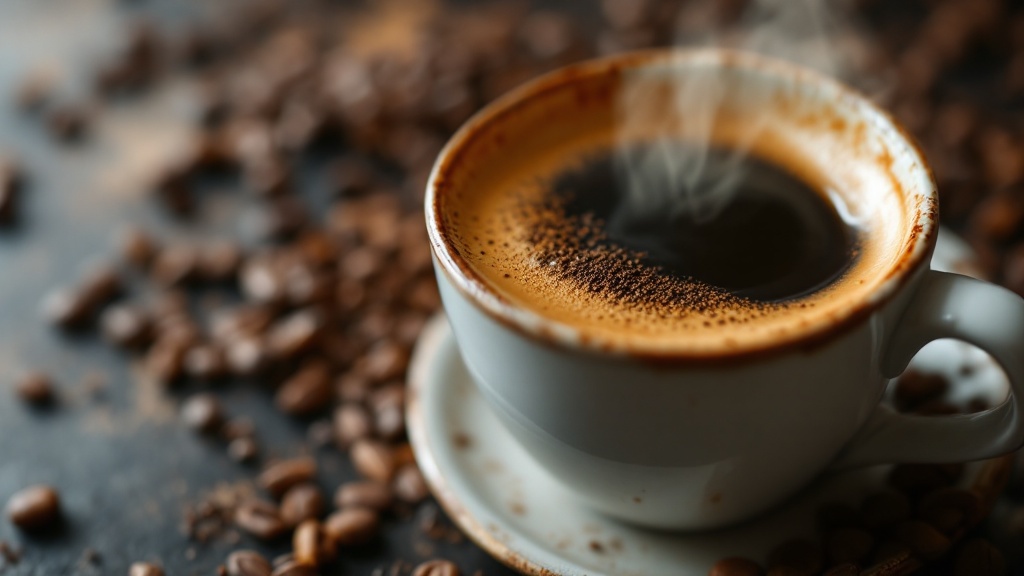
The story of espresso begins in early 20th century Italy, a testament to the human desire for a quick, invigorating caffeine boost. Luigi Bezzera, seeking to speed up the coffee brewing process for his busy clientele, patented the first espresso machine in 1901. The name “espresso,” derived from the Italian word for “pressed out,” perfectly captures the essence of this brewing method: forcing hot water through finely-ground coffee under pressure.
Early Italian espresso blends leaned towards dark roasts with a generous portion of Robusta beans, prized for their bold flavor and thick crema. This tradition laid the groundwork for the espresso we know and love today, but the journey of espresso doesn’t stop there. The latter half of the 20th century saw a shift, with specialty coffee movements championing lighter roasts and single-origin beans. This evolution broadened the espresso landscape, emphasizing nuance and the unique characteristics of different coffee-growing regions.
Espresso Machine Pressure
The pressure profile during espresso extraction is a critical factor influencing the final beverage’s quality. Ideal extraction requires a consistent pressure range, typically between 9 and 10 bars (approximately 130-145 psi), maintained throughout the brewing process. Falling below this range results in under-extraction, yielding a sour, weak, and underdeveloped espresso. Conversely, exceeding the ideal pressure can lead to over-extraction, resulting in a bitter, astringent, and burnt taste. The pressure is generated by a pump within the espresso machine, which can be either a vibratory pump (common in lower-priced machines) or a rotary pump (preferred for its stability and higher pressure consistency). Achieving consistent pressure requires regular maintenance and calibration of the espresso machine’s components, including the pump itself, the group head seals, and the brewing chamber. Variations in pressure can arise from issues like pump malfunction, blockages in the group head, or incorrect tamping technique.
- Pressure gauges allow for real-time monitoring of extraction pressure, aiding in troubleshooting.
- Pre-infusion, a slow initial pressure ramp-up, helps evenly saturate the coffee grounds before full pressure extraction.
- Over time, pump efficiency decreases; regular maintenance, including lubrication, improves pressure consistency.
- Scale buildup in the group head can restrict water flow and negatively impact pressure; descaling is crucial.
- Different coffee beans require slightly different pressure profiles for optimal extraction; experiment to find the sweet spot.
- A pressure profiling machine allows for precise control and adjustments to the pressure throughout the brewing process.
| Key Aspect | Ideal Pressure | Pump Type | Maintenance Tips |
|---|---|---|---|
| Pressure Profile | 9-10 bars (130-145 psi) | Vibratory or Rotary | Regular lubrication, descaling |
| Extraction Issues | Under-extraction (sour, weak) | Over-extraction (bitter, burnt) | Check pump, group head seals |
| Pre-infusion | Slow pressure ramp-up | Even saturation | Improves extraction consistency |
The Third Wave and Beyond: Current Trends in Espresso
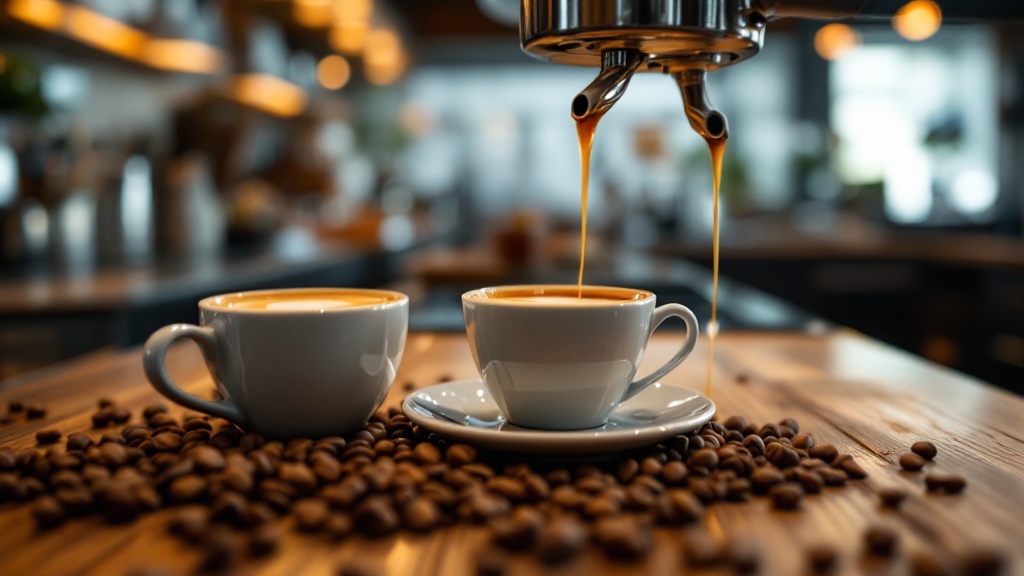
The specialty coffee movement, often referred to as the “Third Wave,” has dramatically impacted the world of espresso. No longer just a quick caffeine fix, espresso is now viewed as an art form, a way to showcase the unique terroir of specific coffee beans. This movement emphasizes single-origin beans, lighter roasts, and meticulous brewing techniques. Transparency and sustainability are also paramount, with growing consumer demand for ethically sourced, organic, and shade-grown coffee.
This focus on quality has coincided with a surge in home espresso brewing. High-quality, affordable espresso machines have become increasingly accessible, empowering coffee enthusiasts to experiment with premium beans and hone their barista skills in the comfort of their kitchens. Plus, a notable trend is the increasing popularity of lighter roasts for espresso, which highlight the brighter, fruitier, and more acidic notes of the beans, offering a refreshing alternative to traditional dark roasts.
Espresso Extraction Optimization
Achieving optimal espresso extraction hinges on precise control over several key parameters. The most critical factors are grind size, dose, tamp pressure, and brew time. Grind size directly impacts the surface area of the coffee grounds exposed to the water; a coarser grind results in faster extraction and a potentially under-extracted espresso (sour, weak), while a finer grind leads to slower extraction and potentially over-extraction (bitter, astringent). The dose, typically measured in grams, determines the coffee-to-water ratio and influences the overall strength and body of the espresso. A consistent tamp pressure, generally between 30-35 lbs, ensures uniform water distribution throughout the puck, preventing channeling – a phenomenon where water finds paths of least resistance, leading to uneven extraction and compromised flavor profile. Finally, brew time, the duration of the extraction process, needs careful monitoring; an ideal espresso extraction typically ranges from 25-30 seconds. Deviations from this window necessitate adjustments to other variables to achieve a balanced outcome.
- Water temperature significantly impacts extraction; ideal range is 195-205°F (90-96°C).
- Coffee bean freshness is crucial; use freshly roasted beans within their optimal window.
- Proper tamping technique is essential for consistent pressure distribution; avoid tilting or uneven pressure.
- Observe the espresso’s color and crema; a rich, dark brown crema indicates balanced extraction.
- Experimentation is key; small adjustments to variables can significantly alter the final product.
- Consider using a scale for precise dosing and timing to achieve consistency.
The Science of the Perfect Shot: Technical Aspects of Espresso
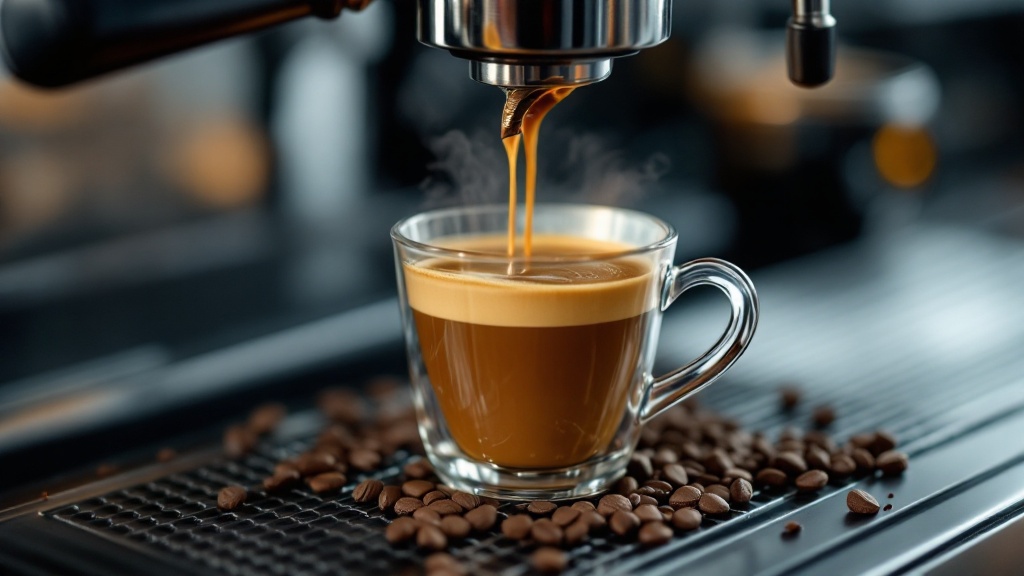
Achieving espresso perfection requires understanding the science behind the process. Several key factors influence the final cup, starting with the grind size. A fine grind, typically between 350-500 microns, is crucial for creating the necessary resistance against the pressurized water. This resistance ensures proper extraction, pulling the desirable flavors and aromas from the coffee grounds. The dose, typically 18-21 grams for a double shot, and the extraction time, ideally 25-30 seconds, also play critical roles.
Maintaining a consistent pressure of 9-10 bars and a water temperature between 90-96°C (194-205°F) are essential for avoiding under- or over-extraction. Under-extraction results in a sour, weak shot, while over-extraction leads to a bitter, burnt taste. Monitoring the Total Dissolved Solids (TDS), ideally between 8-12%, helps ensure optimal strength and flavor balance. Mastering these technical aspects allows for consistent, high-quality espresso.
Espresso Extraction Yield
Optimal espresso extraction yield, quantified as the ratio of brewed espresso to dry coffee grounds, is a critical parameter influencing the final beverage’s quality. A target yield typically falls within the range of 1:2 to 1:2.5, meaning that for every 1 gram of dry coffee grounds, 2 to 2.5 grams of brewed espresso should be produced. This ratio is intrinsically linked to the extraction time, grind size, and dose, forming a complex interplay influencing the solubility of desirable compounds within the coffee beans. Deviation from the optimal range leads to either under-extraction (sour, weak espresso) or over-extraction (bitter, burnt espresso).
- Yield significantly impacts espresso flavor profile; under-extraction results in sourness and lack of body, while over-extraction leads to bitterness and astringency.
- A 1:2 yield generally equates to an extraction time of around 25 seconds, though this can vary based on other factors.
- Using a scale to measure both coffee grounds and espresso output is crucial for accurate yield assessment and consistent results.
- Factors like coffee bean origin and roast level influence the ideal extraction yield and brew time.
- Adjusting grind size is the primary method for correcting extraction yield issues; finer grinds increase extraction, coarser grinds decrease it.
Beans to Brew: Exploring the World of Espresso Beans

From classic Italian blends to innovative single-origin offerings, the world of espresso beans is vast and diverse. Traditional Italian blends, such as Lavazza Super Crema and Illy Classico, offer a balanced, medium-dark roast profile, often featuring a blend of Arabica and Robusta beans. These blends provide a familiar and comforting espresso experience with notes of chocolate, nuts, and caramel.
For those seeking more adventurous flavor profiles, specialty coffee roasters offer a wealth of options. Stumptown Hair Bender, known for its chocolate and cherry notes, and Square Mile Red Brick, with its complex blend of fruit and spice, are popular choices among third-wave coffee enthusiasts. Exploring single-origin espressos allows for a deep dive into the nuances of specific coffee-growing regions. Ethiopian Yirgacheffe, with its bright floral and citrus notes, or Colombian beans, offering chocolatey and nutty flavors, are excellent starting points. Choosing the right bean depends on personal preference and desired flavor profile.
Espresso Roast Levels & Flavor
The degree of roasting significantly impacts the final cup of espresso. Roasting beans beyond the first crack (the audible cracking sound during roasting due to the release of trapped gasses) results in a darker roast, characterized by reduced acidity and increased bitterness. This is often desirable in traditional Italian blends where a bolder, more robust flavor is sought. For instance, a dark roast like Lavazza Super Crema undergoes extensive roasting, developing complex sugars that contribute to its characteristic caramel and chocolate notes. Conversely, lighter roasts, often preferred for single-origin espressos highlighting nuanced flavor profiles, retain more of the bean’s origin-specific characteristics. A lighter roast from a Yirgacheffe bean, for example, will showcase the bean’s inherent bright acidity and floral aromatics, features lost in a darker roast. The Agtron scale, a common industry standard, measures roast color objectively, providing a quantitative measure from 50 (very light) to 20 (very dark). However, organoleptic assessment (sensory evaluation) remains crucial, as the Agtron reading alone cannot fully capture the complexity of flavor development during the roast.
- Dark roasts often exhibit notes of chocolate, caramel, and nuts due to the Maillard reaction, which develops during the extended roasting process.
- Lighter roasts tend to have higher caffeine content compared to darker roasts, as caffeine is less affected by the roasting process.
- The choice between light and dark roast influences the extraction yield; darker roasts often require less water to extract desirable compounds.
- Beyond Agtron, other roast color scales exist, such as the SCAA roast color chart, each with its own nuances.
- Roast level impacts crema production; darker roasts generally produce a thicker, more stable crema due to higher surface oil content.
The Future of Espresso: Innovations and Advancements
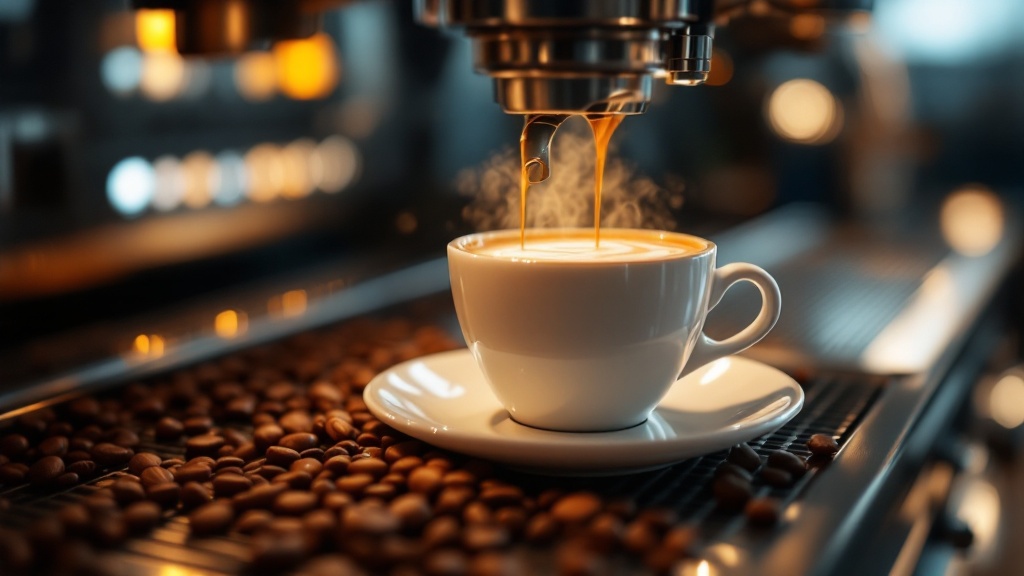
The pursuit of the perfect espresso is a continuous journey, with ongoing innovations pushing the boundaries of what’s possible. Adaptive grinding technology, like that found in the Eureka Mignon Libra, utilizes AI to adjust grind size in real-time, ensuring consistent extraction regardless of bean type or roast level. Pressure profiling, offered by high-end machines like the La Marzocco Strada, allows baristas to manipulate pressure during extraction, further refining flavor and body.
Decaffeination processes, such as the Swiss Water Process, have also seen significant improvements, preserving the flavor integrity of the beans and making decaf espresso a more appealing option. Plus, blockchain technology is being employed to enhance transparency in coffee sourcing, providing consumers with detailed information about the origin and journey of their beans. These advancements are shaping the future of espresso, promising even more flavorful and sustainable cups to come.
Pressure Profiling Extraction
Pressure profiling, a significant advancement in espresso brewing, allows for precise manipulation of the water pressure throughout the extraction process. Unlike traditional espresso machines which deliver a relatively constant pressure, pressure profiling machines offer dynamic control, enabling baristas to create bespoke pressure curves tailored to specific coffee beans and desired flavor profiles. This control is achieved through sophisticated software and pump technology capable of adjusting pressure in real-time, often measured in bars. For instance, a pressure profile might begin with a lower pressure during the pre-infusion phase (around 1-2 bars) to gently saturate the coffee puck, followed by a rapid increase to a higher pressure (9-10 bars) during the main extraction phase for a strong brew. The pressure can then be gradually decreased toward the end of the extraction to prevent over-extraction and bitterness. Many high-end commercial machines, such as the La Marzocco Strada EP and Slayer Espresso, incorporate advanced pressure profiling capabilities allowing for the creation and storage of numerous customized profiles.
- Pressure profiling allows for control over brew time, typically ranging from 20-40 seconds, impacting flavor development.
- Different coffee bean origins and roasts benefit from unique pressure profiles to optimize extraction.
- Data logging capabilities in some machines record pressure and flow rate, allowing baristas to analyze and refine their profiles.
- Pre-infusion pressure is crucial for even saturation and helps prevent channeling, resulting in a more balanced extraction.
- Higher end machines often include user interfaces with intuitive software for creating and adjusting profiles.
- Experimentation with pressure profiles allows for the discovery of unique and nuanced flavor profiles in espresso.
Brewing the Perfect Cup: Tips for Espresso Success
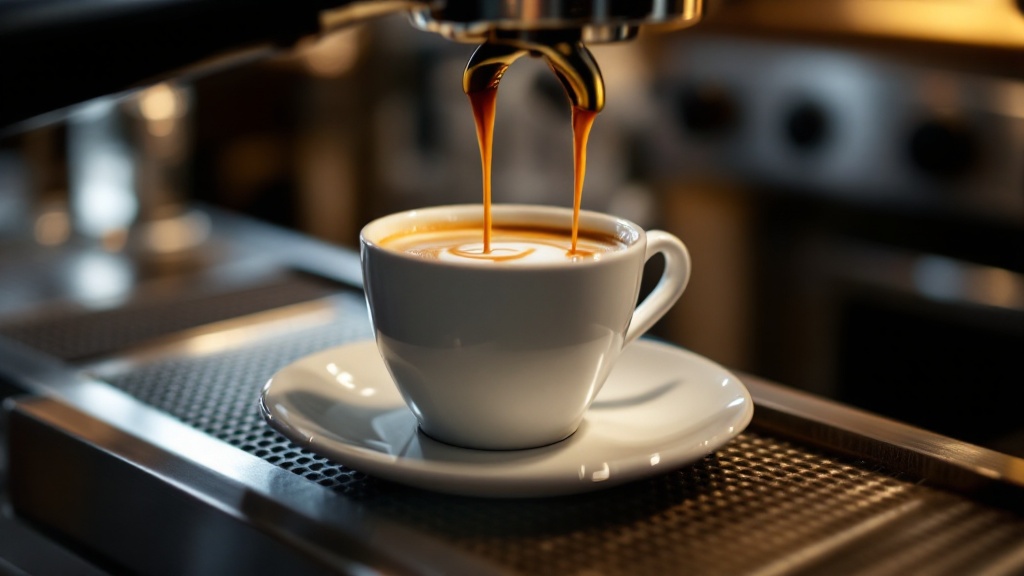
While choosing the right beans is crucial, proper brewing technique is equally important. Always grind your beans immediately before brewing to preserve their freshness and aroma. Invest in a quality burr grinder, which provides a consistent grind size, essential for optimal extraction. Use filtered water with a TDS of around 150 ppm to avoid impacting the flavor of your espresso.
Proper tamping technique is also crucial for achieving even extraction. Apply consistent pressure to the coffee puck in the portafilter, ensuring a level surface. Experiment with different dose sizes and extraction times to find the sweet spot for your specific beans and equipment. Finally, remember that freshness is key. Store your beans in an airtight container away from light, heat, and moisture, and use them within 2-4 weeks of roasting for the best results.
Espresso Extraction Optimization
Optimal espresso extraction relies heavily on achieving a precise balance between grind size, water temperature, and pressure. The goal is to extract the desirable compounds from the coffee grounds within a specific timeframe, typically between 25 and 30 seconds. A finer grind size increases surface area, leading to faster extraction and potentially over-extraction resulting in bitter, astringent espresso. Conversely, a coarser grind reduces surface area, slowing extraction and potentially leading to under-extraction with sour and underdeveloped flavors. The ideal grind size is dependent upon many factors including the bean’s origin, roast level, and the espresso machine’s capabilities. Experimentation using a calibrated burr grinder with micrometer adjustments is essential to achieve the sweet spot for any given bean and machine configuration.
- Water temperature ideally ranges from 195-205°F (90-96°C) for optimal extraction.
- Espresso machine pressure should be consistently around 9 bars for even extraction.
- Observe the espresso’s color and crema; a rich, reddish-brown crema indicates a balanced extraction.
- Dose and tamp consistency are crucial; use a scale and level tamper for consistent results.
- Experiment with different grind sizes in small increments (e.g., 1-2 clicks on a burr grinder) to fine-tune the extraction.
- Taste the espresso! Your palate is the best tool for determining if the extraction is balanced.
Conclusion: Your Espresso Journey Begins Now
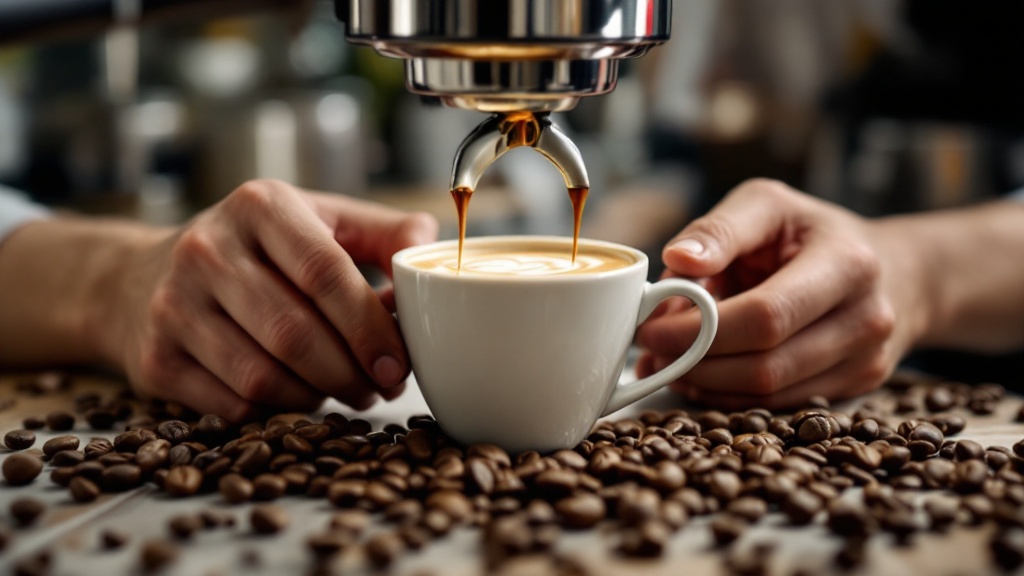
From its humble Italian origins to the cutting-edge innovations of today, the world of espresso is a fascinating blend of tradition and technology. By understanding the nuances of bean selection, roast levels, and brewing techniques, you can elevate your espresso experience from a simple caffeine fix to a true sensory delight. So, embrace the journey, experiment with different beans, and discover the perfect espresso that awaits you.
Espresso Extraction Yield
Espresso extraction yield, typically expressed as a percentage, significantly impacts the final cup’s quality. It represents the ratio of brewed espresso to the initial mass of coffee grounds. Optimal extraction yield generally falls within the range of 18-22%, though this can vary based on factors such as bean characteristics, roast level, and grinder settings. A yield below 18% results in an under-extracted espresso, characterized by sourness, weak body, and a lack of sweetness. Conversely, a yield above 22% produces an over-extracted espresso, exhibiting bitterness, astringency, and a burnt or harsh taste. Precise control of extraction yield requires careful attention to several parameters.
- Extraction yield is calculated by dividing the weight of the espresso produced by the weight of the coffee grounds used, then multiplying by 100%.
- A refractometer provides a more precise measurement of extraction yield than simply weighing the espresso.
- Factors like water temperature and brew pressure significantly influence the final extraction yield.
- Target yield can be adjusted based on bean origin and roast profile; darker roasts may require a slightly lower yield.
- Under-extraction can be improved by increasing the grind size, while over-extraction can be addressed by decreasing it.
- Consistent tamping pressure is crucial for maintaining consistent extraction yield across shots.
| Key Aspect | Optimal Yield | Under-Extraction | Over-Extraction |
|---|---|---|---|
| Extraction Yield | 18-22% | Below 18% | Above 22% |
| Flavor Profile | Balanced | Sour, weak body | Bitter, astringent |
| Adjustment | N/A | Increase grind size | Decrease grind size |

